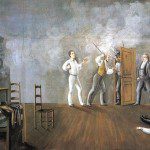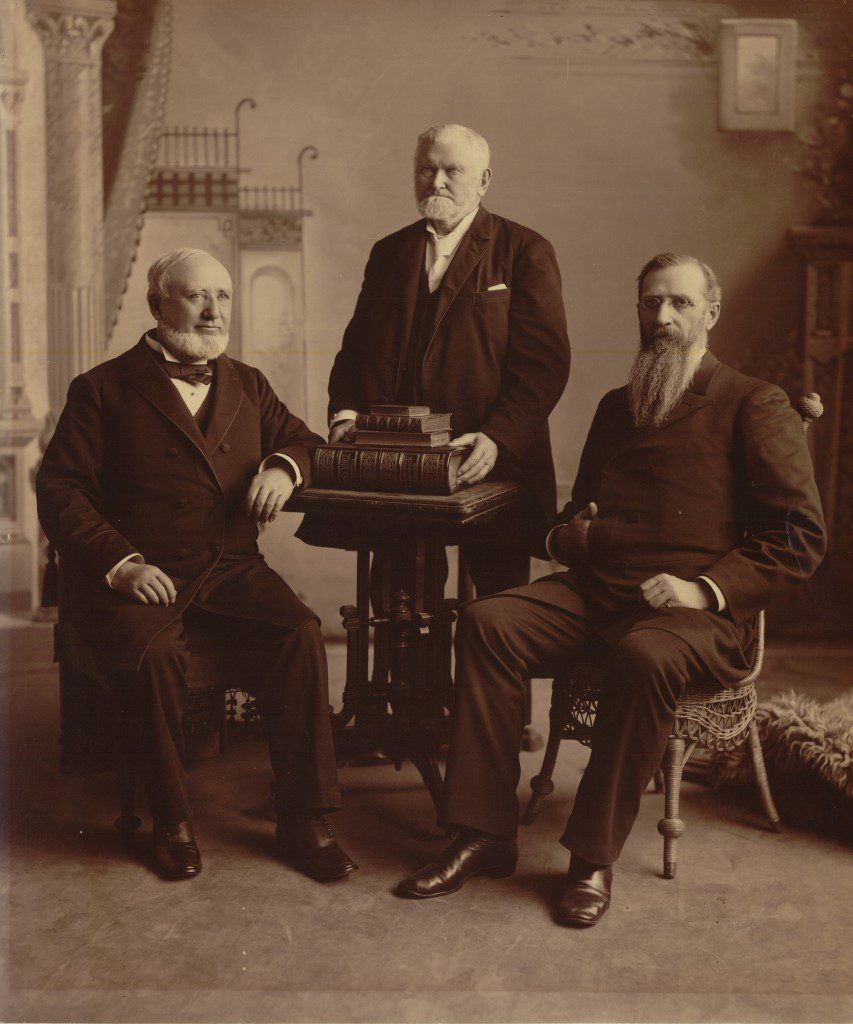The mulberry tree in my backyard has just blown seedpods all over the grass, but it’s a male, thank goodness, so we deal with neither the fruit nor the birds who would flock to eat that fruit. An arborist told me the tree is as old as the house (1928). Our church building, a block away, is on land that used to be a mulberry orchard, created to sustain the silkworms that LDS women so painstakingly cared for and harvested in the 19th century. I like to think our mulberry tree is older than the house and connected to those trees a block away that fed the ravenous, demanding worms.
I have trouble sleeping in the spring because of my garden, wondering whether those seedpods will be good for the grass, wondering whether new mulberry trees will try to establish themselves in the vegetable plot. There’s so much to think about: how the plants are doing, how the beds look now. Where do we need a bit of white, of black? How can I get more height in the spring display? As Jamaica Kincaid so aptly described, “How agitated I am when I’m in the garden, and how happy I am to be so agitated. How vexed I often am when I’m in the garden, and how happy I am to be so vexed. What to do?” (Jamaica Kincaid, My Garden (Book) (New York: Farrar Straus Giroux, 1999), 14.)
I try not to read gardening books or magazines at least 90 minutes before bed; they are far too stimulating. But sometimes I can’t resist. Even when I do resist, it is hard with my head on the pillow and soft sheets under my chin not to let my thoughts wander to the flower and vegetable beds just outside my windows. I focus well when I am actually in the garden, where all there is, is digging, pulling, clipping, and observing. Working in the garden brings me soundly into the present moment. I’ve read other gardeners, the kind that also like to write, reflect about this. For me, gardening also brings a spiritual rootedness. Gardening is what my people do, it is where I am from.
My mother, now 73 years old, wishes now she had paid more attention to her own father’s garden, which she remembers as extraordinary. I declined my mother’s invitations to help in the garden when I was growing up. I remember her working out there long after dark, the sounds of her moving the hose, watering the pots, coming in through the open patio door along with the evening breezes from Rock Canyon to the east of us. Sounds and breezes together added to the comfort of my repose on our blue velvet couch. At last she would come inside with a look of deep contentment – until she saw I had taken advantage of her distraction to watch Love Boat and Fantasy Island – both off limits.
Now I am the one outside after dark, trying to get the early weeding and planting done before the summer heat sets in. My LDS neighbor across the street suggested a headlamp for after dark gardening, so you can distinguish new plants from young weeds and keep your hands free. Some friends who garden say (their moral superiority insufficiently concealed) they really only have interest in growing food; they don’t care about the flowers. I say that makes me the real Mormon (speaking of moral superiority). In my view, gardening involves more than self- sufficiency. The Saints in Nauvoo grew flowers in the front of their houses, veggies in the back. Brigham Young said, “Adorn your habitations, make gardens, orchards and vineyards, and render the earth so pleasant that when you look upon your labors you may do so with pleasure, and that angels may delight to come and visit your beautiful locations.” ( Quoted in Thomas Carter, “Folk Design in Utah Architecture,” in Utah Folk Art: A Catalog of Material Culture, ed. Hal Cannon (Provo, Utah: Brigham Young University Press, 1980), 40. I believe the pursuit of beauty is a crucial spiritual benefit to gardening, which other benefits include cultivating wonder and learning to nurture a life, young or old. How do I help that little seed become a carrot? Where do I prune a forsythia gone wild?
One hundred years ago, when church leaders worried about young Saints leaving farms to live in the city, they preached passionately about the spiritual wisdom that tending the earth will yield. Heber J. Grant, for example, taught in 1923, “It has always fallen to the lot of the Latter-day Saints to be engaged in tilling the soil. . . . I believe firmly that the very best place in all the world to rear Latter-day Saints is on the farm, and that about the poorest place to rear Latter-day Saints is in the biggest city in which you can locate them. There seems to be strength, physical, moral and religious, which comes to those engaged in cultivating the soil.” ( “Conference Report,” April 1923; cited in Donald H. Dyal, “Mormon Pursuit of the Agrarian Ideal,” Agricultural History 63, no. 4 (Fall 1989): 19–35.) At the April 1978 General Conference, church president Spencer W. Kimball renewed the refrain, although then he was talking about home gardens instead of farms. I often remember his words when I lie awake at night during springtime, “The spring of the year reminds us, too, of the need to garden so that we can produce some of our own food as well as flowers to beautify our yards and our neighborhoods. Even if the tomato you eat is a two dollar tomato, it will bring satisfaction anyway and remind us all of the law of the harvest, which is relentless in life. We do reap what we sow.” (Dyal, “Mormon Pursuit of the Agrarian Ideal,” 33–34.)











